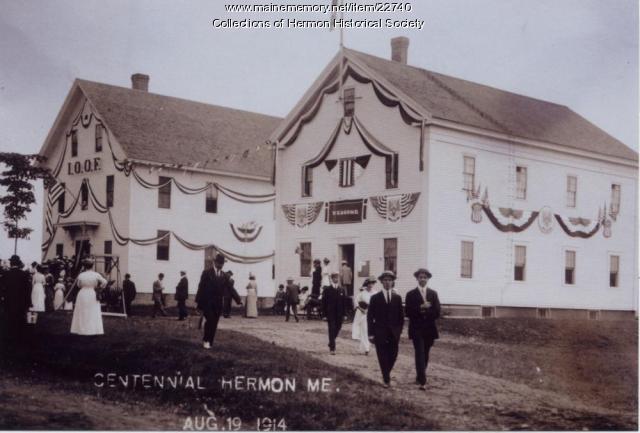Keywords: women's
Item 15611
Houlton Women's Club play, 1914
Contributed by: Aroostook County Historical and Art Museum Date: 1914-02-24 Location: Houlton Media: Photographic print
Item 12582
Business women's convention, Portland, 1925
Contributed by: Maine Historical Society/MaineToday Media Date: 1925 Location: Portland Media: Glass Negative
Item 87371
Owner in 1924: Missionary Society M.E. Church Use: Italian Fresh Air Camp
Item 87372
Owner in 1924: Missionary Society of M.E. Church Use: Shed
Item 151394
Victoria Mansion, Portland, 1983-1984
Contributed by: Maine Historical Society Date: 1983–1984 Location: Portland Client: Victoria Society of Maine Women Architect: Carol A. Wilson; R.E. Wengren Associates, Architects
Item 151738
Home for aged women, Portland, 1900-1926
Contributed by: Maine Historical Society Date: 1900–1926 Location: Portland Client: unknown Architect: John Calvin Stevens and John Howard Stevens Architects
Exhibit
Women at the turn of the 20th century were increasingly involved in paid work outside the home. For wage-earning women in the Old Port section of Portland, the jobs ranged from canning fish and vegetables to setting type. A study done in 1907 found many women did not earn living wages.
Exhibit
Published women authors with ties to Maine are too numerous to count. They have made their marks in all types of literature.
Site Page
"… National Federation of Business and Professional Women's Clubs Power of Potential View the Maine Women's Business Convention Slideshow…"
Site Page
Strong, a Mussul Unsquit village - Prominent Women
"Prominent Women Text By: Strong School 7th and 8th Graders, 2011-2012 Julia Harris May poetry collection, 1903Farmington Public Library…"
Story
Waponahki Rematriation
by Sherri Mitchell Weh’na Ha’mu Kkwasset
Women's leadership in Wabanaki communities
Story
The tradition of lobstering
by Sadie Samuels
I learned to fish from my Dad and will lobster the rest of my life
Lesson Plan
Primary Sources: Maine Women's Causes and Influence before 1920
Grade Level: 6-8
Content Area: Social Studies
This lesson plan will give students the opportunity to read and analyze letters, literature, and other primary documents and articles of material culture from the MHS collections relating to the women of Maine between the end of the Revolutionary War through the national vote for women’s suffrage in 1920. Students will discuss issues including war relief (Civil War and World War I), suffrage, abolition, and temperance, and how the women of Maine mobilized for or in some cases helped to lead these movements.
Lesson Plan
Building Community/Community Buildings
Grade Level: 6-8
Content Area: Social Studies
Where do people gather? What defines a community? What buildings allow people to congregate to celebrate, learn, debate, vote, and take part in all manner of community activities? Students will evaluate images and primary documents from throughout Maine’s history, and look at some of Maine’s earliest gathering spaces and organizations, and how many communities established themselves around certain types of buildings. Students will make connections between the community buildings of the past and the ways we express identity and create communities today.






















